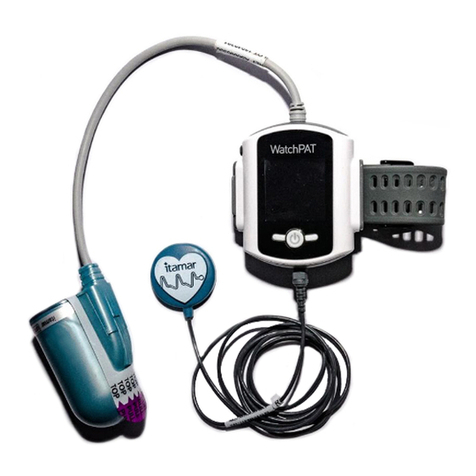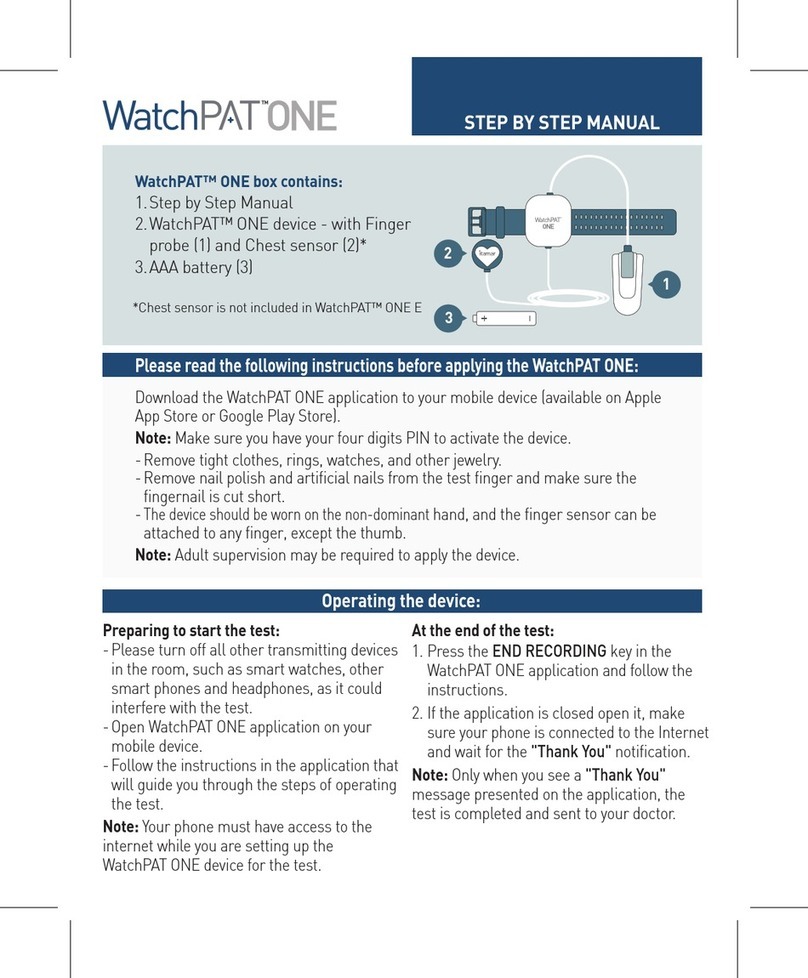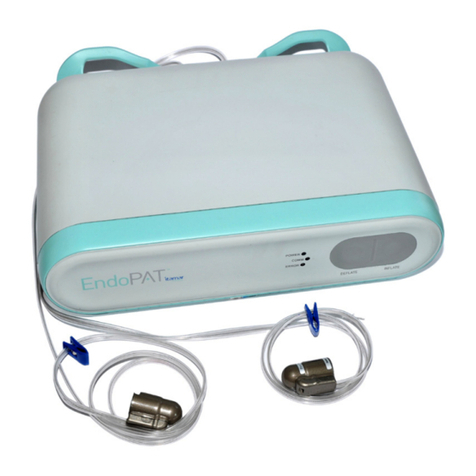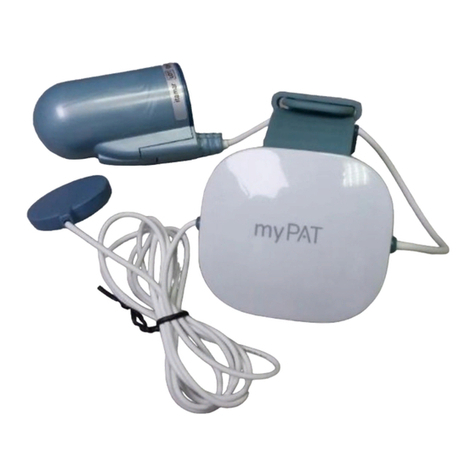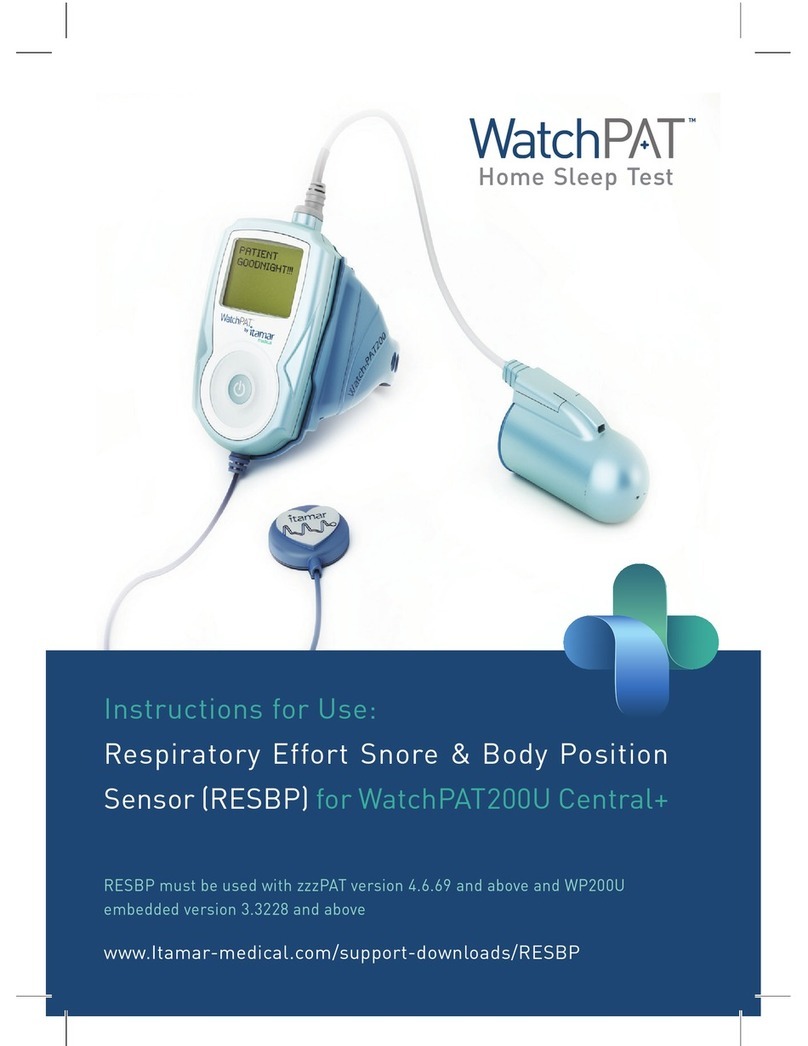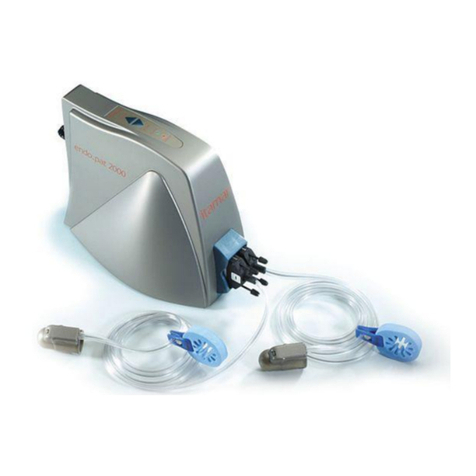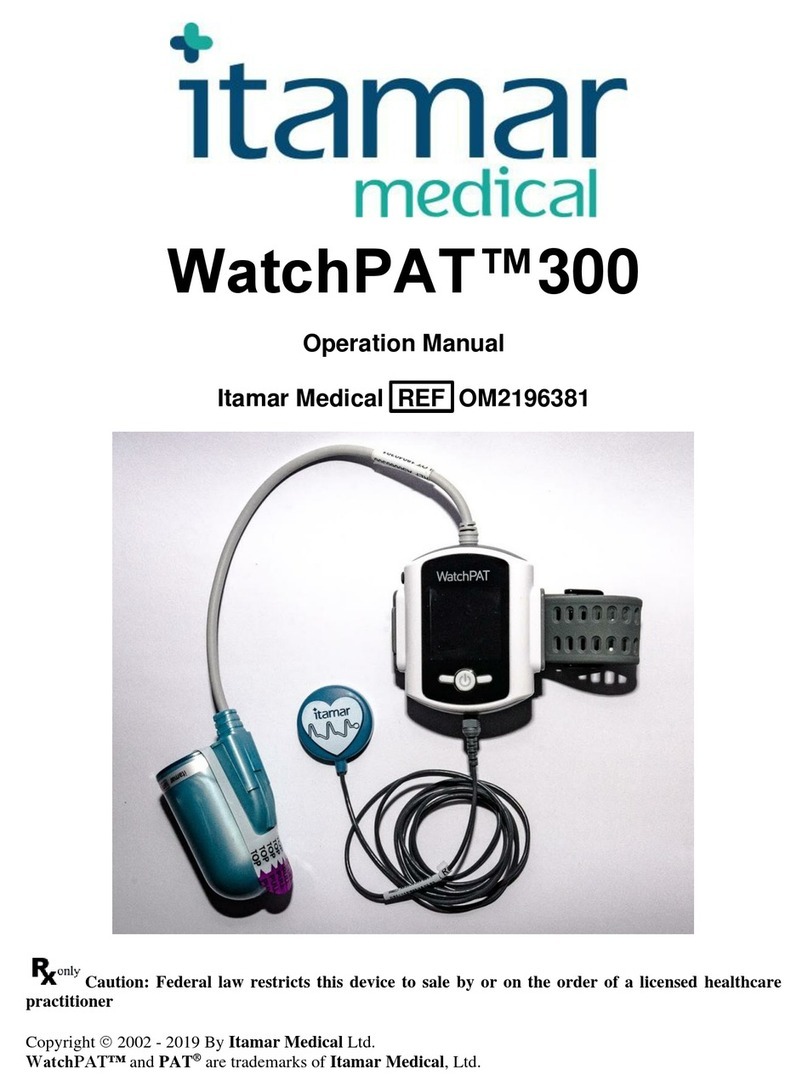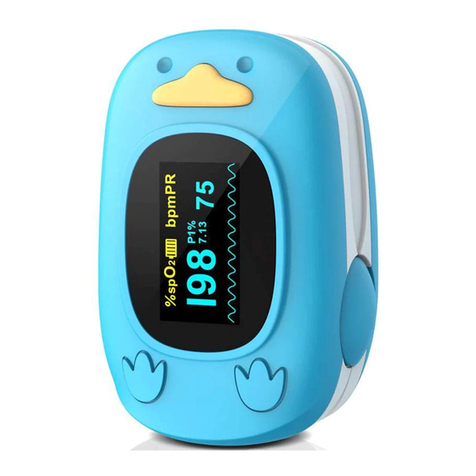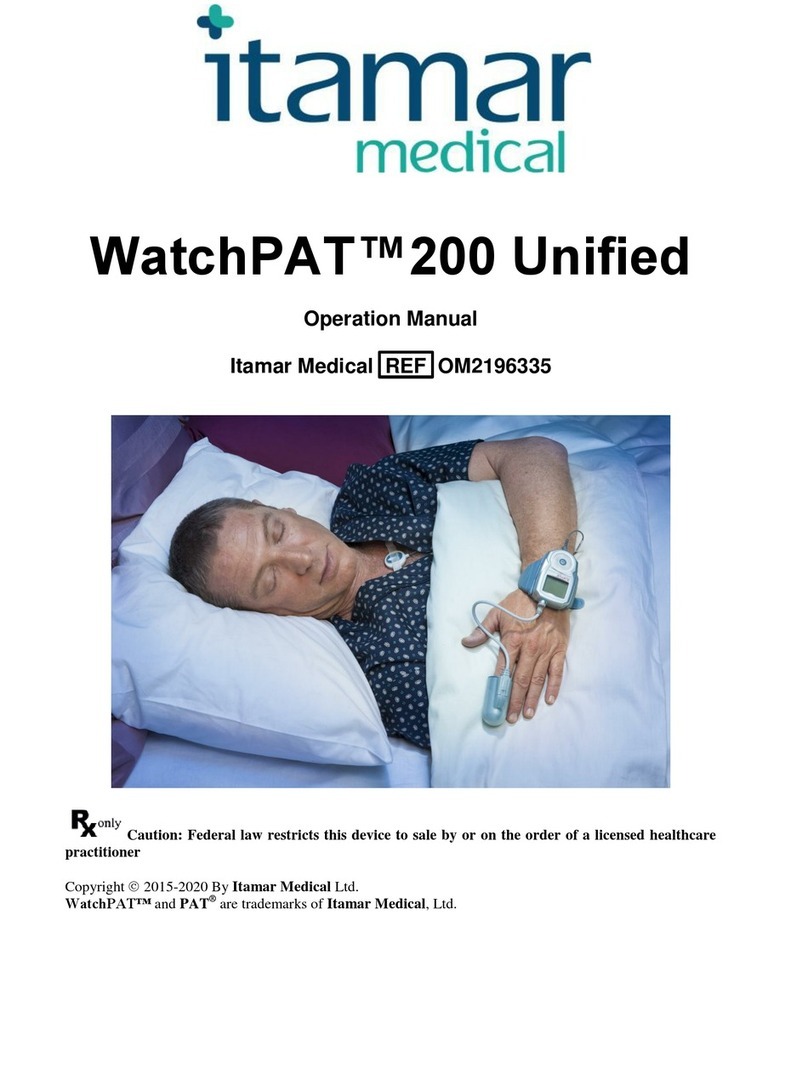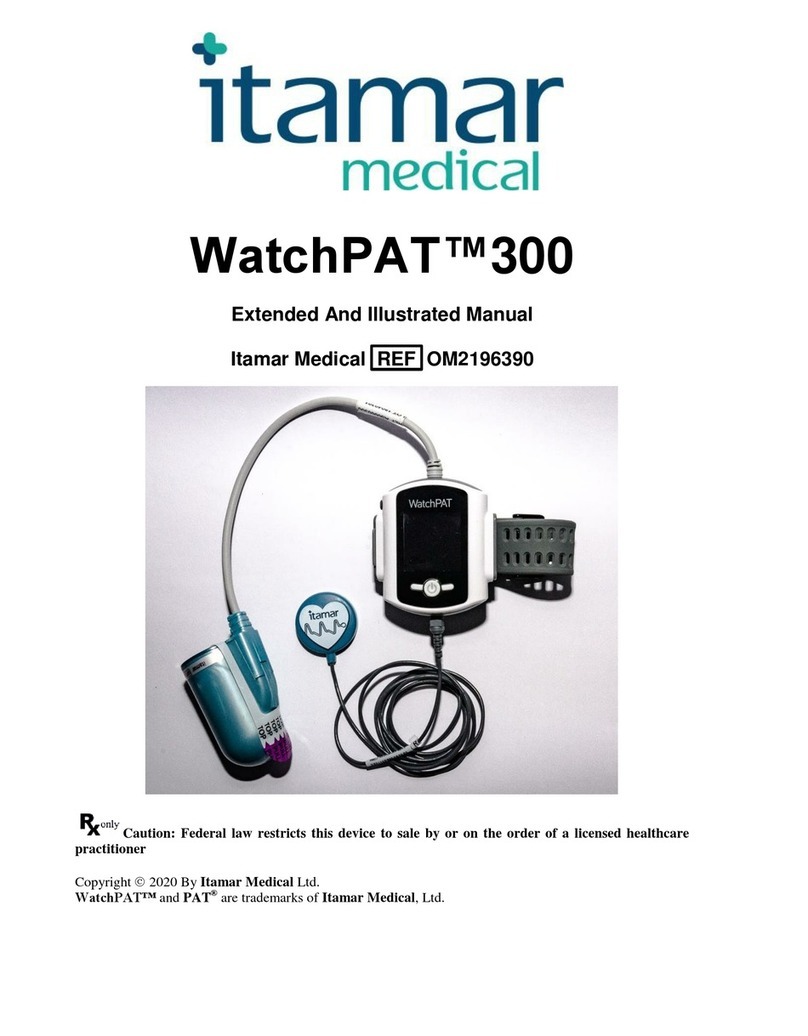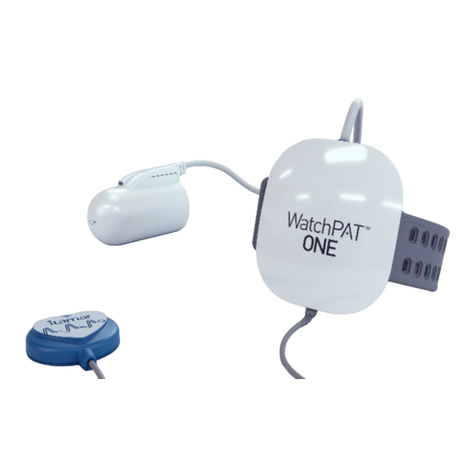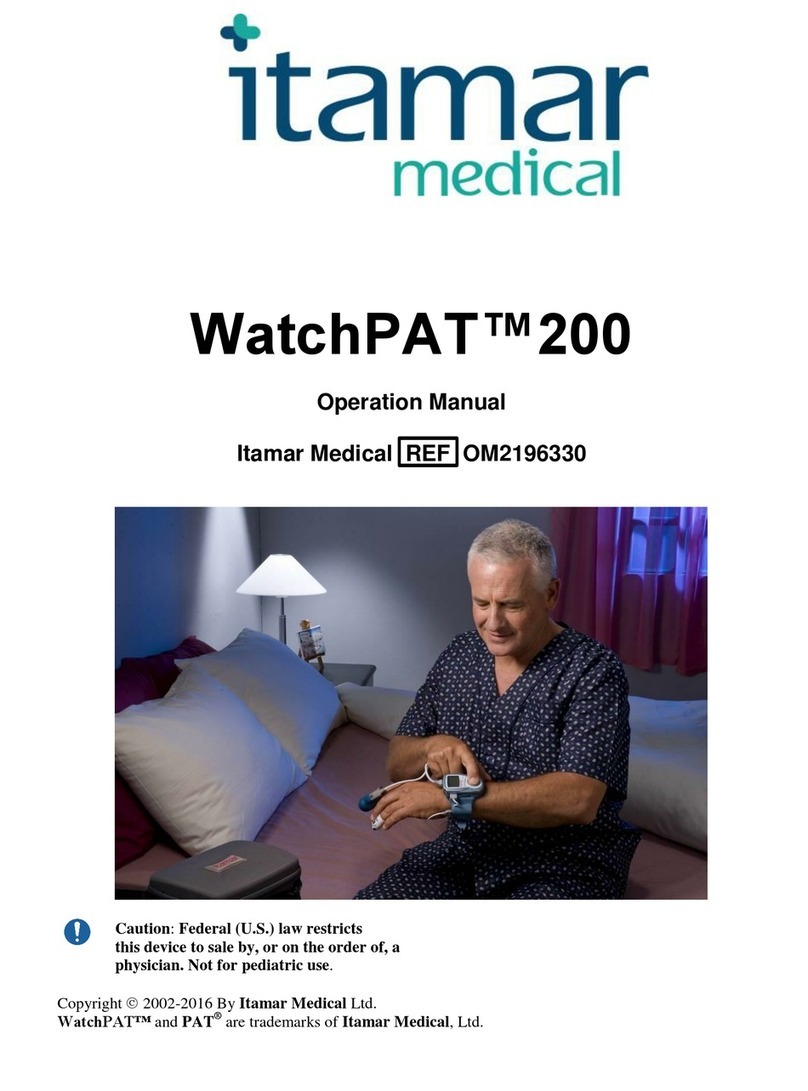WatchPAT™200U System iii Operation Manual
Table of Contents
1GENERAL INFORMATION..................................................... 1
1.1 Intended Use / Indications for Use ........................................................ 1
1.2 Restrictions for Use................................................................................1
1.3 Precautions .............................................................................................2
1.4 Additional Precautions specific to pediatric use ................................. 2
1.5 Data Generated by the WatchPAT™200U .............................................3
1.6 Equipment Classification .......................................................................3
1.7 Quality Assurance System: EN ISO 13485............................................4
1.8 CE and CSA Compliance........................................................................5
1.9 Conventions Used in this Manual..........................................................5
1.10 Warnings, Cautions and Notes.............................................................. 6
1.11 Safety Precautions..................................................................................7
1.12 Symbols Used on the Product Labels................................................... 8
1.13 WatchPAT™200U Device Labels ...........................................................9
1.14 FDA information......................................................................................9
2OVERVIEW............................................................................10
2.1 System Description............................................................................... 11
2.2 User Interaction with the WatchPAT™ Device Keys.......................... 12
2.3 WatchPAT™ Device Function.............................................................. 14
2.4 Built-In Self-Diagnostic Procedures.................................................... 15
3PREPARATION FOR SLEEP STUDY...................................19
3.1 Charging the Battery............................................................................. 19
3.2 Preparing the Snore and Body Position Sensor ................................ 20
3.3 Preparing the Wrist Strap..................................................................... 20
3.4 Mounting the WatchPAT™ on the Wrist Strap ................................... 21
3.5 Replacing the uPAT Probe................................................................... 21
3.6 Preparing the WatchPAT™ Device for a New Study .......................... 22
3.7 Testing the WatchPAT™ Device .......................................................... 22
3.8 WP200U Self-diagnostic Test Results and Trouble-shooting........... 22
3.9 Packing the Carrying Case................................................................... 23
4OPTIONAL FUNCTIONS.......................................................24
4.1 Using the integrated Snore & Body Position Sensor......................... 24
4.2 Tamper-Proof Testing with WatchPAT™ Device................................ 25
4.3 Multi-night study................................................................................... 27
5DATA DOWNLOAD AND ANALYSIS ...................................28
6MAINTENANCE.....................................................................29
